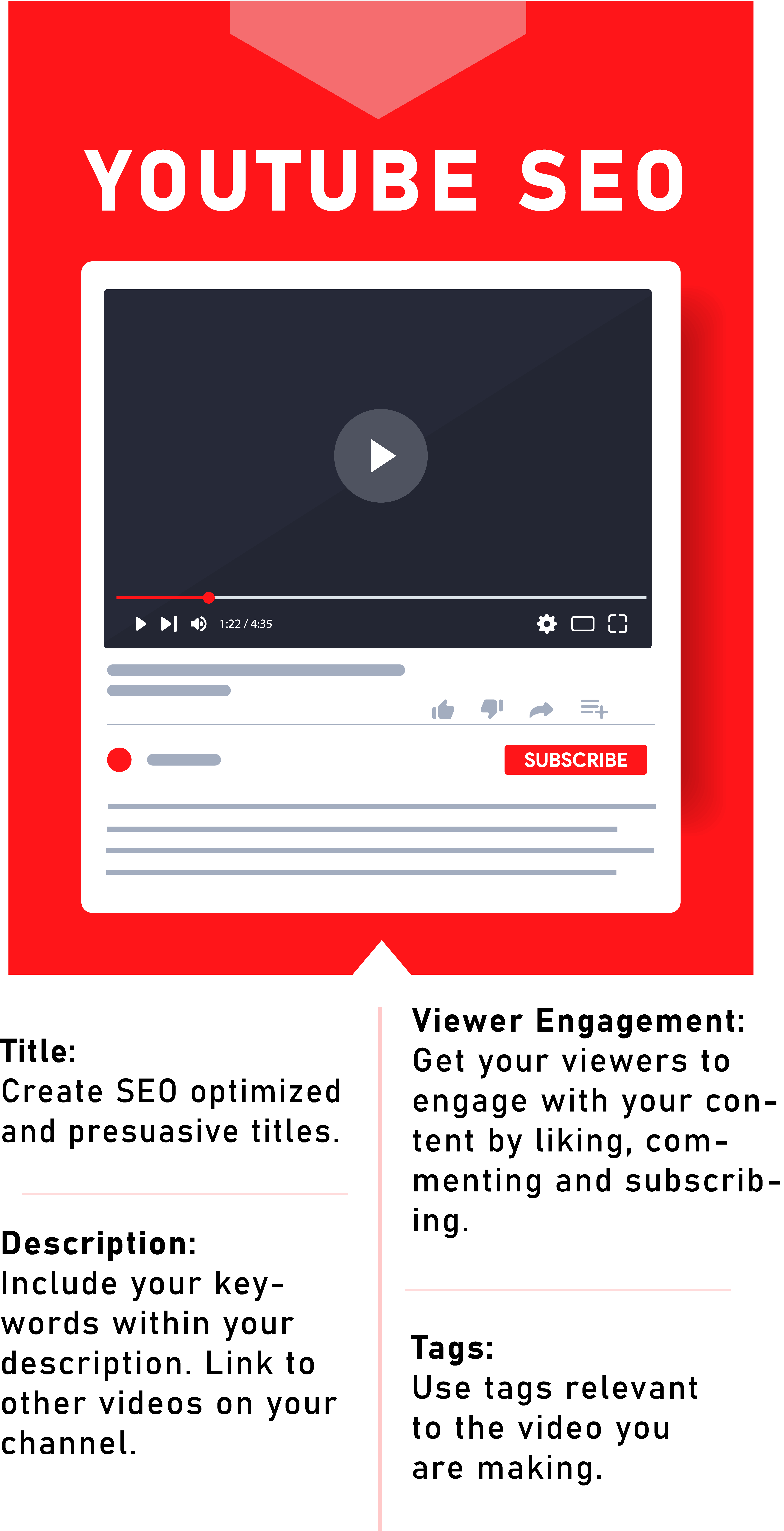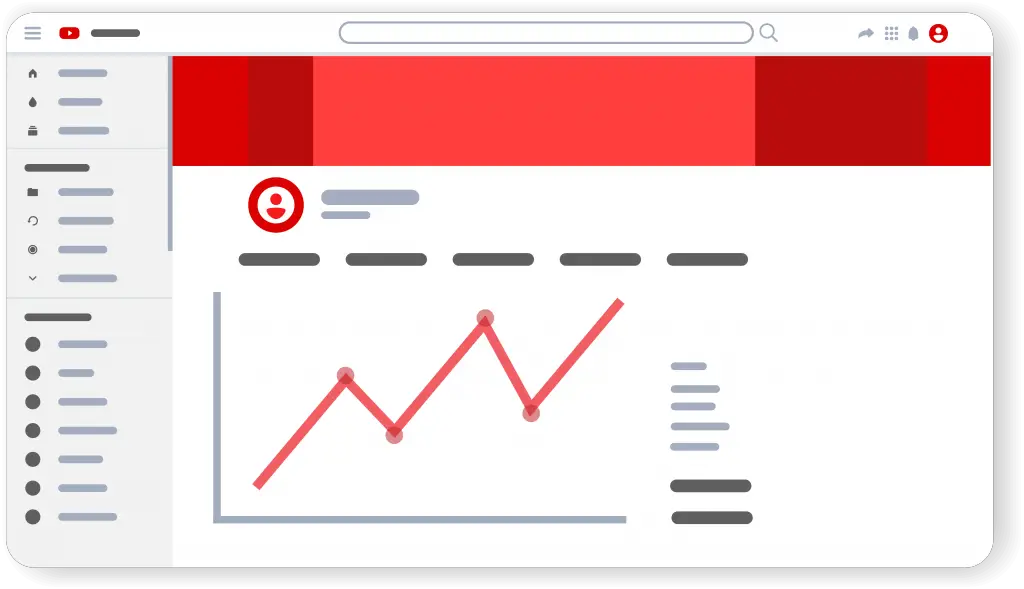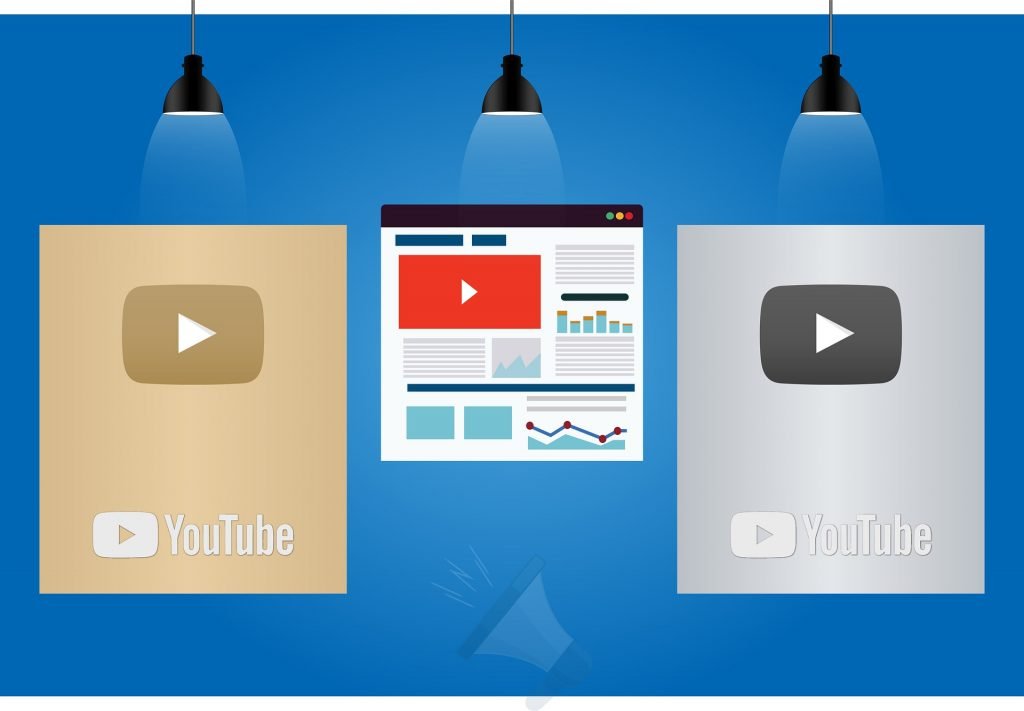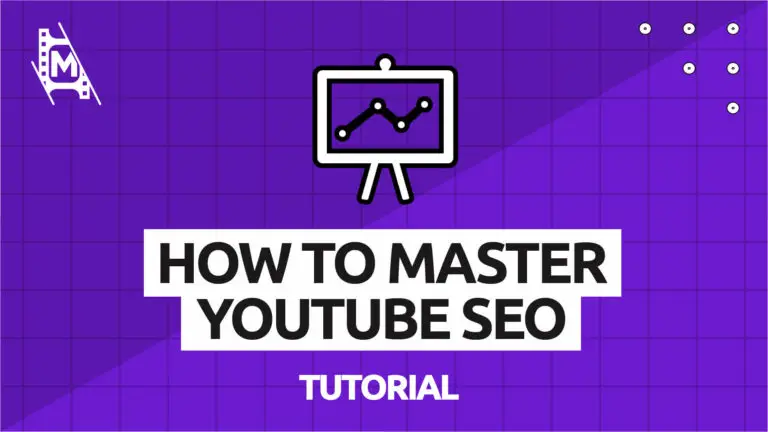Do you feel you are creating great content but not getting any views? If so, you are not alone. You might have heard of SEO before and the impact it has on how your videos rank. But what exactly is Youtube SEO? And how does it work? In this extensive article, we will cover how to go from zero to hero in Youtube SEO.
The fact is that you will struggle to get many views when you are just starting. But there are definite steps you can take to get your videos seen by people. If your content is any good, you will be able to grow your channel exponentially.
If you are looking to start a vlog and need a guide, feel free also to check out our Ultimate Guide on How to Start a vlog.
What is Youtube SEO?
SEO stands for Search Engine Optimization. Simply put, it is the science behind getting your videos recommended by youtube and ranking on search.
The goal of the platform is to give their audience the best content possible and to keep them watching. Therefore, youtube has developed an algorithm designed to do just that. It goes through thousands of videos, rewarding what it believes is the best content in a certain topic or niche by higher rankings and recommendations to viewers.
Youtubes algorithm takes into consideration many factors when ranking people’s videos. We will cover all of the most important ones below in definite steps you can take today to get your videos seen. This is what Youtube SEO is all about.

Why is Youtube SEO Important
Without proper SEO, you will find it very difficult to get any views at all on your videos. If you do not carefully craft titles, find great keywords, and SEO optimize your content, Youtube will instead promote your competitor that does.
This is why it is so important to understand Youtube SEO. With the proper techniques, you will make your channel more discoverable, and you will grow a lot faster.
The message from Youtube is simple; Play within the algorithm’s rules, create great content, and you will be rewarded.
Youtube SEO Tutorial
Now you know what youtube SEO is and why it is important. But how do you actually SEO optimize your content? This is what we will show you here, step by step.
Keywords
It all begins with keywords; Youtube is a search engine. Most people primarily find new channels to watch by searching for a topic or question they might have, the particular phrase they use when searching is called a keyword.
Some keywords are more popular than others, and some have higher competition than others. You want to find the keywords people are using when searching youtube and later use them strategically within your content to rank for them. This process is essential to Youtube SEO. So take your time to understand it.
How to Find Keywords for Youtube – Step by Step:
Whenever you make a new video, you want to find keywords to rank for. Ideally, you want to make a list of a few keywords to use. In the list, you want to include one primary keyword and a few sub-keywords.
Primary Keyword – A primary keyword is a keyword that gets the most searches within a topic or question but has manageable competition. You want to find one primary keyword for each of your videos.
Sub-keywords – These are variations of the primary keyword. Usually, you include a few of them in your content.
Step 1: Use Youtube’s Suggestion feature
To find what keywords people are searching for, you could simply go to the youtube search bar and begin a sentence and let the autocorrect fill it out for you. This will give you a general idea of what people are looking for in your particular topic or niche.
Step 2: Use a Keyword Tool
The next step is to go deeper into your search by using a keyword research tool. Here you will see exactly how many people searched for a keyword on a monthly basis, and how competitive it is to rank for it.
For this step, you can use the Google Keyword Planner or keywordtool.io
Step 3: Make a list of Keywords to use
Start by making a list of potential keywords for your video. Then go further and find sub-keywords, which are a slight variation of the phrase or topic.
Step 4: Incorporate them into your content
Once you have your list of keywords, it is time to include them in your video, title, description, and tags. We will show you how to do that next.

Titles
Except for being a big factor in getting clicks, titles have enormous SEO value. It is arguably the most important factor in Youtube SEO. This is why you want to incorporate your keywords into your title. Here is what to consider:
Include the Primary Keyword- Include the exact primary keyword at the start of the title. By doing this, the YouTube algorithm knows what your video is supposed to be about. And you improve your chances to rank for that keyword.
Persuasion – How good is your title at getting clicks? Your click-through rate is an indirect factor affecting youtube SEO. If youtube sees your videos get clicked on more often than your competitors, your content will rise in rankings.
Make sure to learn some basic copywriting and persuasion techniques when making a title for your video. Get viewer interested by posing a question, or piquing their curiosity in some way.
Search Intent – Search Intent is the why behind the phrase, question, or keyword. To put it simply, why did the person do that search. Understanding search intent can help you deliver the most relevant video to the viewer and communicate that through the title.
Keep the Title Short (But not too short!)- When creating a Youtube title, it should be no longer than 70 characters to show up correctly in the search results. While a title should not be overly long, each of the 70 characters is valuable real estate you could use to include sub-keywords or a persuasive question or statement. Ideally both. Be sure to use the space most effectively.
Clickbait
We cannot discuss youtube titles without mentioning clickbait; As youtube grew, many creators figured out that writing very exaggerated titles, sometimes even misleading, improved their views. This got the name click-baiting and got a bad rap within the community.
While writing persuasive titles that get clicks is usually fine, do not build your whole channel on misleading titles. This will only anger your audience, and many might click away from your videos. Keep it real, and respect the viewers that took the time to click on your video.
Descriptions
The descriptions are also a chance to include keywords and useful content for your viewers. There is a limit of 5000 characters allowed in the description field, so you get a lot of space to use.
What to include in your description
You want to include the primary keyword at the beginning of the description and then sprinkle sub-keywords throughout your text. You could, for example, have a short description of your video in a few sentences. Or you could include a transcript of the first 30 seconds of your video (this can be good for SEO). Otherwise, you could simply describe your channel.
Links
When it comes to linking outside of youtube, there are a few things to consider.
Remember that Youtube’s primary goal is for viewers to stay on the platform for as long as possible; they want their audience binge-watching content. So naturally, they would want to reward content that keeps audiences on the platform. This is why you might not want to link outside of youtube in the description unless it is to your social media, affiliate link, or a beneficial resource to the viewer.
Make sure to link instead to other relevant videos from your channel in your description. What is the natural next step for your viewer following this video? Make sure to share that link or video in your actual video or just say “link is in the description.”
Thumbnails
Think of the thumbnail as a preview of your video. Like your title, it is a chance to persuade the viewer to click on your video among many results.
While not directly tied to SEO, a good thumbnail will get your more views, and the youtube algorithm will be happy, promoting your channel. So take time to create good looking thumbnail. You can use an online tool like www.canva.com or high-end editing software like Adobe Photoshop.
Tip: Include your keyword in your thumbnail file name; For example, keyword.jpeg.
Tags
A way to think of tags is like categories or topics. Like the title, tags help Youtube, and the audience to get a grasp of what the video is about.
One tag can be up to 30 characters in length, and you can include many tags on your video. Make sure to include your primary keyword and sub-keywords as tags. Also, use tags related to your content that people are searching for to make your video more discoverable. Find the tags your competition is using.
You can use a tool like https://rapidtags.io/generator/ to generate relevant tags for your video to simplify the process.
Transcription
What you say in your video also affects SEO. Youtube automatically makes a transcription of your video as long as it supports your language. Although a bit unreliable, youtube uses the transcriptions to identify relevant keywords you try to rank for.

You should try to include your primary keyword and a few sub-keywords in the first 20 seconds of your video.
As we mentioned, youtube usually does an awful job of transcribing your video. So we recommend you make your own subtitles. This is a great way to show you are taking your content seriously.
Viewer Engagement

Getting your viewers to engage with your content is vital for good SEO on Youtube. This is why so many YouTubers remind their viewers to like, comment, and subscribe. And you should do that too.
For example; You can engage viewers by setting a milestone of x amount of likes, polling, or creating a contest in the comment section. There are many creative ways to get your audience to like and comment on your videos without being obnoxious about it. Find the way that works best for your content and your channel.
How read Youtube Analytics
Understanding youtube analytics can help you find what you are doing right, and the areas where you need improvement. Youtube analytics is inherent to understanding youtube SEO. Without a direct way to measure your success, it will be challenging to get it right consistently.

Although Youtube’s analytics page deserves a whole article by itself, we will focus on the factors directly affecting Youtube SEO. These are Viewer Engagement, Average view duration, Impressions, Traffic Sources, and Overall Video Performance. All analytics stats are now found within youtube studio on your channel page.

Engagement
As mentioned above, how much viewers engage with your video is an important ranking factor for your Youtube algorithm.
You will find all info you need in the Engagement tab. There you can see how many of your viewers comment, like, and dislike your videos. You will also see how this has evolved over time.
Average View Duration
Also found in the Engagement tab is the Average view duration, or how much of your videos are being watched.
Using this information, you can estimate how long your videos ideally should be, or if you need to use a better hook at the start or generally improve your content. Do your viewers tend to watch your whole video or click off at a certain point? Remember that the longer a viewer stays on the platform, your content will get promoted.
Traffic Sources
In the Reach tab, you will find your impressions, click-through rates, and views stats. You will also see how viewers found your videos. Was it from search, suggested, or from an external source?
You can see how many times your videos show up and compare that to how many clicks you are getting, and how you’ve evolved over time.
Video Performance
By seeing which videos did well and which did not, you will get a sense of what your audience wants to see and if you got your SEO right. Keep an eye on the stats of every video you uploaded after some duration to see if you did something right or something wrong.
Click-through rate (CTR)
We touched on CTR a little bit above; Put simply, your click-through rate is how many people choose to click on your video when choosing from many in results.
It is vital to have a good click-through rate, and ideally better than your competition. The higher the click-through rate is, the better your rank will be among search and recommended videos. A higher click-through rate is only achievable through creating good videos, SEO optimized titles, descriptions, and by including tags.
Good Content is Key
The last factor we will cover here is what it all comes down to in the end; No matter how amazing your youtube channel SEO is, you won’t be getting anywhere without great content to go with it.
If your audience does not like your videos, or thinks your titles and thumbnails are misleading, they are likely not to watch your video or return to your channel. The youtube algorithm will be the first one to notice.
Youtube is a business, and they want to provide their audience with the best content possible. This is why they put a lot of work into an algorithm designed to promote only the best videos on the platform. So make sure to create the best videos you possibly can.

In Conclusion
Hopefully, now you know what Youtube SEO is and how to use it to work for you.
Still, remember that even if you execute flawlessly on everything we showed you above, you have to be consistent for a long time before seeing any real results. In the online content game, consistency is the key, and there is no shortcut. Having said that, on the other side of hard work is a great opportunity.
